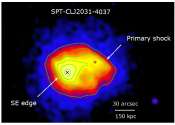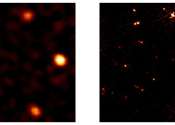Hubble measures the distance to a supernova
Measuring the distance to truly remote objects like galaxies, quasars, and galaxy clusters is a crucial task in astrophysics, particularly when it comes to studying the early universe, but it's a difficult one to complete.









